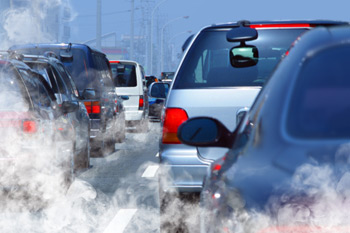Today, 8/31, the Environmental Protection Agency (EPA) held the first day of a 2-day hearing on the proposed new ozone standard, which is to not change the current standard. The proposal to leave the ozone standard unchanged is inadequate to protect public health, and is especially harmful to black seniors who are at higher risk of death from ozone, and black children who are more likely to have asthma than white children.
Anne Mellinger-Birdsong, MD, MPH, FAAP, medical education advisor for Mothers and Others for Clean Air, testified at the EPA hearing today. A pediatrician colleague from Georgia is also testifying at the hearing tomorrow.
This is what Dr. Anne said at the hearing:
My name is Anne Mellinger-Birdsong. I’m a pediatrician with a subspecialty in environmental public health. I’m speaking on behalf of Mothers & Others For Clean Air, a non-profit that does education and advocacy for clean air policies.
Let me state up front: Mothers & Others For Clean Air opposes this proposal to leave the ozone standard unchanged, because the current standard does not adequately protect health. Leaving the ozone standard at 70ppb will cause more deaths and illness, and will cause millions of children to miss school and millions of adults to miss work.
Ozone is a powerful oxidizing agent. It causes epithelial damage, pulmonary inflammation, and structural damage to the lungs. It causes even worse health problems for people with inflammatory lung conditions such as asthma or chronic obstructive pulmonary disease (COPD).
Asthma is the number one chronic disease in children – according to CDC data, about 5 million children in the U.S. have asthma, and they miss 14 million days of school each year. This standard will cause them to spend more of their lives sick and missing school. Missing so much school can have lifelong ramifications on school performance, grade retention, acceptance to college, and even their final career and income.
In addition, because about 14% of black children have asthma compared to about 7% of white children, allowing the standard to remain unchanged will cause disproportionate harm to black children.
As a pediatrician I find it disturbing to hear an agency that is charged with protecting health state that the current standard is adequate, when it so clearly harms millions of children.
During the last review of ozone in 2015, multiple medical groups, including the American Medical Association, the American Academy of Pediatrics, and the American Thoracic Society recommended an ozone standard of 60 ppb. This was because data clearly showed that 60ppb was needed to protect public health, and the data is stronger now. I will review some of the newer data.
In 2017, Di and colleagues studied ALL 60 million Medicare beneficiaries. For every 10ppb increase in ozone, they found a 1% increased risk of death, even among people living where the average ozone was under 50ppb. They showed an increased risk of death for ozone levels far below 60ppb, and a disproportionate number of deaths in black people.
In 2018, Strosnider and colleagues studied respiratory ED visits in counties across the U.S. For children 18 years old or younger, for each increase in ozone of 20ppb, they found a 2-4% increase in ED visits for acute respiratory infections (ARI), asthma, and pneumonia. For adults 19-64 years old, they found a 4-7% increase in ED visits for ARI, asthma, COPD, and pneumonia. For adults 65 years or older, they found a 2-5% increase in ED visits for ARI, COPD, and pneumonia.
In 2019, Wang and colleagues studied ozone and its effects on emphysema and lung function, in 7,000 adults in the Multi-Ethnic Study of Atherosclerosis. They found that people who lived in higher ozone areas had a greater progression of emphysema, and a greater loss of lung volume. The study found that living with a 3ppb increase in long-term ozone worsened emphysema equivalent to smoking a pack a day of cigarettes.
To summarize, Mothers and Others For Clean Air opposes this proposed standard that doesn’t protect health. Scientific studies show that ozone at the current levels causes death, illness and damage to the lungs. Breathing 3ppb more ozone long term is like smoking a pack a day of cigarettes. Is it really protective of health to have people breathing air that is the equivalent of smoking cigarettes? Why is EPA using its legal processes and mechanisms to propose a standard that doesn’t protect health, and in a manner that disproportionately harms black children?
References for scientific articles mentioned:
Di Q, et al. Air Pollution and Mortality in the Medicare Population. N Engl J Med 2017;376:2513-22. DOI: 10.1056/NEJMoa1702747
Strosnider et al. Age-Specific Associations of Ozone and Fine Particulate Matter with Respiratory Emergency Department Visits in the United States. Am J Respir Crit Care Med 2019;199:882–890. DOI: 10.1164/rccm.201806-1147OC
Wang, et al. Association Between Long-term Exposure to Ambient Air Pollution and Change in Quantitatively Assessed Emphysema and Lung Function. JAMA. 2019;322(6):546-556. doi:10.1001/jama.2019.10255





